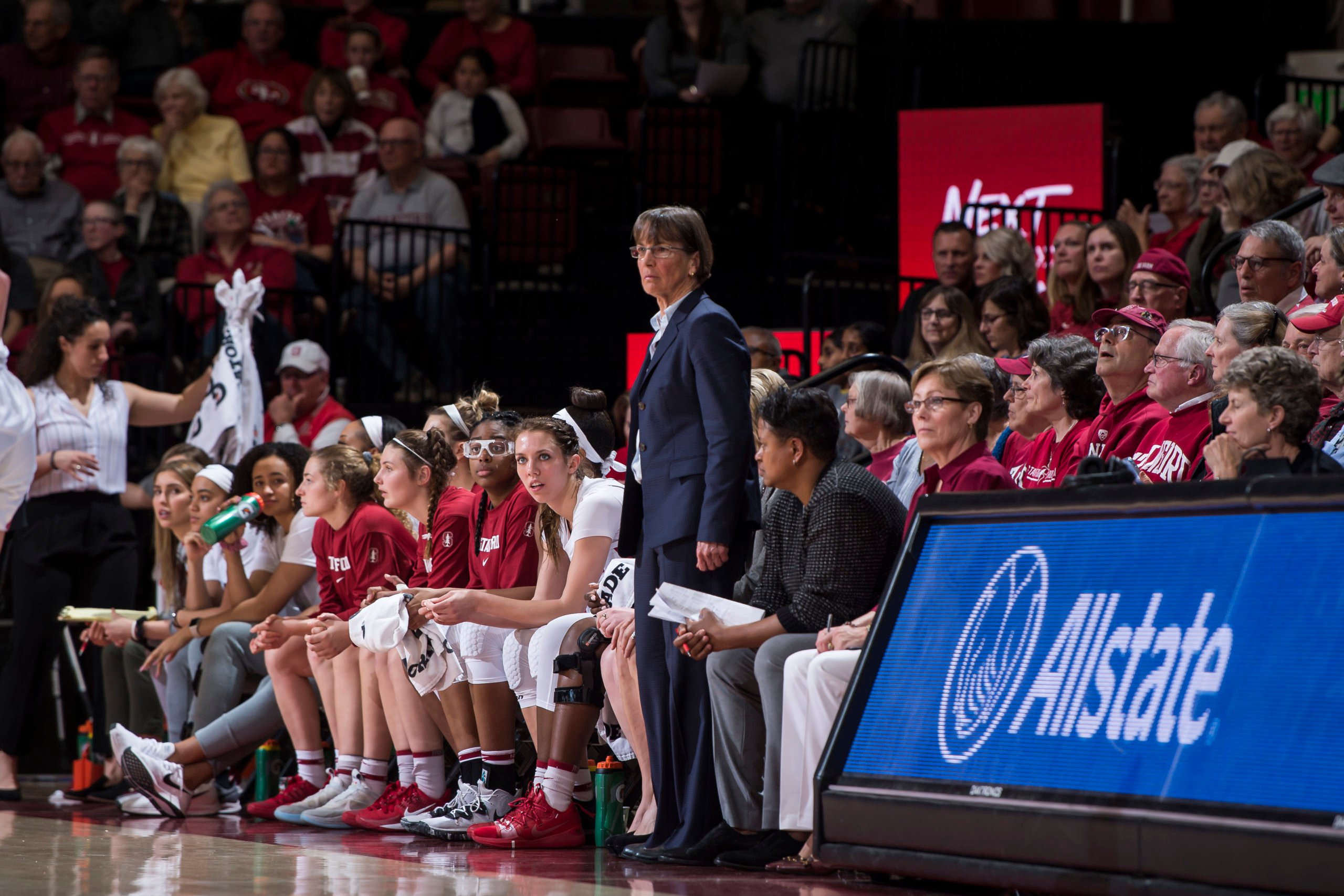The impact of the COVID-19 pandemic has been felt globally in the athletics world, upending professional sports, collegiate sports and even the recruiting process for high school athletes. Stanford Athletics coaches and prospects are adapting to the major changes in the recruiting process, namely the lack of live sporting events, NCAA restrictions that will continue through at least Aug. 31 and interactions through Zoom and other virtual platforms.
The cancellation of sporting events at all levels since March, combined with the implementation of social distancing nationwide, has prohibited coaches from fully evaluating prospects’ abilities. With face-to-face interaction on hold for the time being, college coaches have turned to virtual communication as a way to reach student athletes.
However, the changes in how recruits can be evaluated puts some athletes at risk. Players who are dependent upon in-season development and breakout seasons are now at a disadvantage. Baseball coach David Esquer ’87 said the complexities and challenges of virtual interactions have introduced extra roadblocks into the recruiting process.
“Even players that were in our view and we had information about, the borderline guys that needed to … give us a chance to see if they were someone we wanted — we missed out on those opportunities,” Esquer said.
“A lot of players are impacted [by the lack of current statistics and scores] and do not display what they are capable of, and it is hard for the coaches to know what they are capable of when they don’t coach them,” said cross country head coach J.J. Clark when asked about the challenges that many athletes are facing after not playing their sport since March. Clark does not have updated times for most of his recruits due to the nationwide cancellation of the high school spring track and field season.
Clark and other coaches are also concerned that some student athletes will have to make a decision whether to attend Stanford without getting the chance to visit campus and interact with the coaches and players. The pandemic is currently limiting in-person recruiting visits, while athletes and parents in the future will undoubtedly feel hesitation to interact with other athletes and coaches in the future. However, the University has not yet changed the early deadline for admittance, which will inevitably put prospective athletes in a difficult position as they choose where to attend college.
With the pandemic limiting displays of athletic skills, in-person recruiting visits and other in-person interactions, coaches have emphasized the importance of academics as well as improving upon skills that can be refined without competition.
“Take AP classes and do well. Work hard to take the toughest schedule you can and do the best you can. In basketball, being in great shape, controlling things you can control, work on your offensive skills, passing, dribbling and shooting,” said women’s basketball coach Tara VanDerveer.
Esquer also offered advice to prospects, saying they should “continue to take care of business in the classroom… take advantage of this time to keep moving the needle positively as far as their skill and their game is considered.”
Some teams are contemplating whether to limit their roster size in the future to offset the certain financial impacts of the pandemic, particularly in light of Stanford’s recent decision to discontinue 11 varsity sports. However, the Cardinal’s baseball and women’s basketball coaches have indicated that they will not move forward with those cost-cutting plans. The majority of the 2020 spring collegiate baseball season was cancelled because of COVID-19, so the class of 2020 seniors were granted an extra year of eligibility. Many have indicated that they plan to return for their final year on the Farm. Despite that, there will still be sufficient roster spots for recruits, as the baseball team works to reach the NCAA maximum of 35 players.
VanDerveer also explained that her team does not plan to limit roster size or number of recruits, instead opting to minimize expenses by traveling with fewer staff members to games and taking other cost-reducing measures.
Changes to the recruiting process are inevitable, and it remains to be seen whether virtual recruiting will become the new norm. Esquer, however, continues to maintain a positive outlook for the future of the sports world while giving one final piece of advice to athletes and fans alike.
“Be patient, just ride out the storm a little,” Esquer said. “We will get back to normal, we will get back to having on campus events and there will be games played…just have a little faith.”
Contact Mary Lee at marylee1099 ‘at’ gmail.com.
